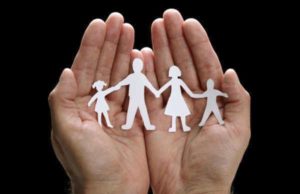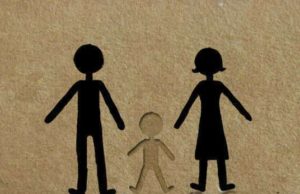
Foster Care vs. Adoption Explained
Every child deserves a stable and loving home. However, not every child gets to grow up in a family that provides such an environment. Some children are separated from their biological parents due to various reasons, such as neglect or abuse. These children need temporary or permanent homes, and that’s where foster care and adoption come in.
Both foster care and adoption aim to provide children with safe and secure homes, but they differ in certain aspects. In this article, we will explain the differences between foster care and adoption and explore the pros and cons of each option.
Foster Care: An Overview
Foster care is a temporary placement for children who cannot live with their biological parents. Foster care is designed to be a temporary solution while the parents address their issues, work to improve their situation, and reunite with their children.
Foster parents are trained, licensed individuals who provide a safe and nurturing home for children until they can be reunited with their biological parents, placed with relatives, or adopted. Foster parents receive monthly stipends to cover child care expenses, including food, clothing, and medical care.
When a child is placed in foster care, a social worker from the state or a private agency supervises the case. The social worker works with the biological parents to identify and address the reasons for the child’s placement in foster care. The social worker also monitors the child’s progress and makes recommendations to the court regarding the best interests of the child.
Foster care is generally preferred over institutional care, such as group homes or detention centers, because it provides a more nurturing environment that mimics a family setting. Foster care also allows children to maintain connections with their community, school, and relatives.
Adoption: An Overview
Adoption is a permanent legal process that gives a child a new family and a stable home. The adoptive parents become the child’s legal parents, with all the rights and responsibilities that come with that role.
Adoption can be either domestic or international. Domestic adoption is the adoption of a child within the same country as the adoptive parents. International adoption is the adoption of a child from a different country.
Adoption is either an open or closed process. In an open adoption, the biological parents and the adoptive parents have ongoing contact and communication. In a closed adoption, the biological parents and the adoptive parents do not have any contact or communication.
The adoption process can take several months to several years, depending on the circumstances. The process involves a home study, which evaluates the adoptive parents’ suitability and readiness to adopt, and a legal proceeding, which terminates the biological parents’ rights and establishes the adoptive parents’ rights.
Foster Care vs. Adoption: Pros and Cons
Foster care and adoption have their advantages and disadvantages. Here are some of the pros and cons of each option.
Foster Care Pros:
1. Provides a temporary safe and nurturing environment for children who cannot live with their biological parents.
2. Allows children to maintain connections to their community, school, and relatives.
3. Gives biological parents an opportunity to address their issues, work to improve their situation, and reunite with their children.
4. Gives prospective parents a chance to try out parenthood and decide if adoption is right for them.
Foster Care Cons:
1. Foster care is a temporary solution and may be disruptive for children who are moved from one home to another.
2. Foster parents have limited legal rights and can only make decisions regarding the child’s daily care.
3. Foster parents may have to deal with the emotional challenges of saying goodbye to a child they have cared for when the child is returned to their biological parents.
Adoption Pros:
1. Provides a permanent home and family for children who cannot live with their biological parents.
2. Gives children stability and security, which is essential for their social, emotional, and cognitive development.
3. Allows adoptive parents to legally become the child’s parents with all the rights and responsibilities that come with that role.
4. Provides adoptive parents with the opportunity to experience the joys and challenges of parenthood.
Adoption Cons:
1. Adoption can be a lengthy and expensive process.
2. Adopted children may face psychological and emotional challenges related to their adoption.
3. Biological parents may experience grief and loss when they give up their parental rights.
Fostering and Adoption Statistics
According to the U.S. Department of Health and Human Services, Administration for Children and Families, Children’s Bureau, there were approximately 424,000 children in foster care in the United States in 2020. The average age of foster children was 8.3 years, and the median time spent in foster care was 14.4 months.
Of the children who exited foster care in 2020, 55% were reunited with their biological parents or primary caregivers, 20% were adopted, and 8% were emancipated or aged out of care.
In terms of adoption, there were 54,378 adoptions in the United States in 2020. Of these, 65% were domestic adoptions, and 35% were international adoptions.
Conclusion
Foster care and adoption are two options for providing safe and loving homes for children who cannot live with their biological parents. Both foster care and adoption have their pros and cons, and the best option depends on the circumstances.
Foster care is a temporary solution that provides children with a safe and nurturing environment while their biological parents work to improve their situation. Adoption, on the other hand, is a permanent legal process that gives a child a new family and a stable home.
The decision to foster or adopt a child is a significant one that requires careful consideration. Prospective parents should be aware of the challenges and responsibilities that come with each option and should seek guidance from professionals to ensure that they are equipped to handle them. Ultimately, the goal should be to provide children with the stability, security, and love they need to thrive.
A foster care parent is responsible of taking careof the child on a day to day basis; therefore they must provide themwith food, shelter, health care and clothing. Although the foster careparent is responsible for the child’s daily functioning, the state isentitled to make all legal decisions. Foster care is intended to be a short term placement until the child is granted permanent placement in another home. Adoption is when a person takes full custody of a child. Often adoption is done by a biological family member; however that is not always the case.
When a child is adopted all rights are transferred over to the adoptive parent. Adoption can be done through an open adoption, where biologicalparents and adoptive parents discuss the adoption, or through a closedadoption, where adoptive parents have no connection with biologicalparents. Adoption agencies are used to clarify the adoption as well asensure the possible safety of the child.Regardlessof whether a person chooses to adopt or become a foster parent, eachoption can positively help the child. It is important when considering either method to make sure that the person is able to handle to. complications and struggles of being a parent.
















